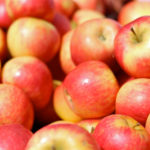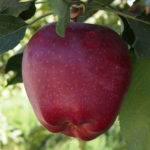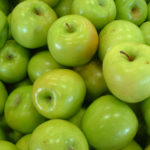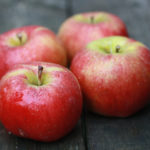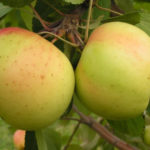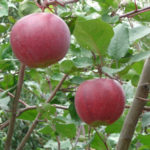Apple variety Belarusian raspberry
Winter varieties of apple trees are considered to be of the highest quality, as they ripen slowly, accumulating more taste and vitamins. Therefore, they are valued higher than more early maturing varieties. Belarusian apple trees have taken root in Russian gardens, among them - Belarusian raspberry, which is distinguished by its beautiful appearance and good taste. She was brought out in the Belarusian Research Institute of Fruit Growing. Authors G.K. Kovalenko and V.G. Kovalenko took Antonovka ordinary and Lovefam as parental forms. The novelty was not included in the State Register of the Russian Federation, but since 1991 it has been included in the State Register of Varieties and Trees and Shrubs of the Republic of Belarus. Recommended for home cultivation. The culture has been zoned in Latvia since 1988 and is considered promising for central Russia. According to reviews, it grows successfully in the Novgorod region.
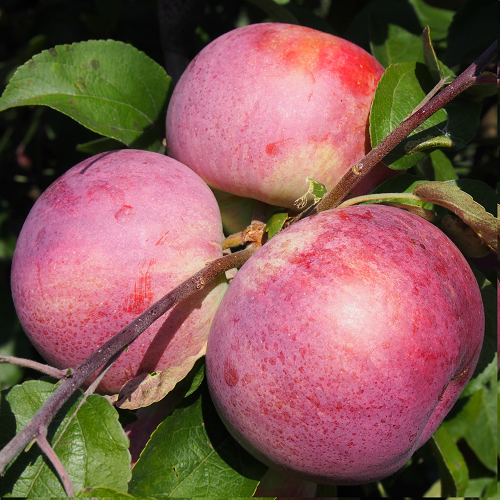
Description
Plants with a height of 3 to 5 meters. The crown is raised, rounded, thickened is moderate. Skeletal branches are strong, erect, like the bole, covered with grayish-brown bark. The separation of the main branches from the trunk is 40 °, but the fusion is quite strong. Shoots are geniculate, well pubescent, dark cherry in color. Lentils are small, light, in small quantities. The leaves are large, dark green, leathery, with a shiny surface. The shape is ovoid, with a twisted spout, the plate is strongly curved along the central vein, the edges of the leaves are raised, wavy, the serration along the edge is crenate, with smoothed teeth. The base of the leaf is rounded or heart-shaped. Young leaves on the tops of the shoots fold along the central vein. The petiole is short, thick, cherry-colored. The buds are small, oval in shape, growing, pressing against the shoot. Fruiting of an apple tree occurs mainly on ringlets and fruit twigs.
Apples are flat-round, sometimes round, with slight ribbing. By weight, the fruits of the Belarusian raspberry exceed the average - 100 - 150 grams, sometimes up to 250 grams. The funnel is narrow, of medium depth, sometimes with traces of rusting. The saucer is not wide, shallow, with slight folding. The calyx is small, mostly closed. The cone-shaped sub-cup tube is connected to the heart. The heart is small, shaped like a bulb, located in the upper part of the fruit. The seed chambers are small, mostly closed, the seeds are dark brown. The peduncle of the variety is short, usually does not exceed the length of the funnel, thick, at the point of attachment to the branch it has a thickening. The skin is smooth, firm, thin. The fruits of this apple tree are very beautiful in appearance. The main color of a ripe apple is light green, the integumentary color is in the form of a rich raspberry striped blurred blush over most of the surface. The apple is densely covered with a well-visible waxy bloom of a bluish tint. The subcutaneous points are light, subtle, in small quantities. The pulp is juicy, fine-grained, crispy, white, can have a light creamy shade, medium density, moderate aroma. The taste is sweet and sour, pleasant. Assessment of tasters - 4.0 - 4.2 points. Immediately after picking, the taste of the fruit may seem overly sour, so the apples should be aged a little, around the beginning of January, in order to acquire the best taste. 100 grams of raw pulp contains: total sugars - 10.1%, titrated acids - 0.51%, ascorbic acid - 18.1 mg, P-active substances 270 g. The ratio of sugar to acid is 20.
Characteristics
- The early maturity of the Belarusian raspberry is very good. Usually, the apple tree already in the second or third year enters the fruiting period on the stock 62-396. But on a seed stock, sometimes you can wait about 5 - 6 years for the harvest;
- the variety belongs to the winter. In the conditions of Orel, the harvesting maturity occurs at the end of September. But not later than the beginning of October;
- with the harvest, if the weather permits, you can take your time. Apples until the end of the collection are firmly held on the branches;
- the average yield is 120 c / ha, the maximum rate is 250 c / ha. On average, 37 kg of apples are removed from a ten-year tree, this figure increases with age;
- the productive life of the tree is about 30 years;
- winter hardiness is good, but still slightly lower than that of Antonovka... For the average region of Russia, the indicators are quite sufficient. Shoots do not freeze at -30 ° C. If damage occurs on young wood, the tree is able to quickly recover;
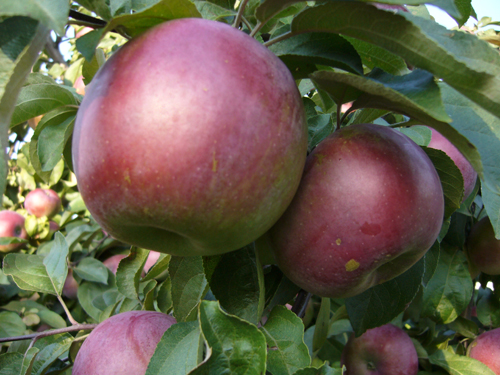
- the immunity of the Belarusian raspberry is not high enough. The culture is resistant to fruit rot. But in wet years, scab damage is possible (leaves are affected by 3.1 points, fruits - by 3.0 points);
- the apple tree can also suffer from pests. She is especially bothered by aphids, moths, spider mites;
- fruiting is annual, but a year with excellent yields can be replaced by a year with moderate fruiting rates;
- the culture is not self-fertile, therefore, without a decent pollinator, the productivity of the plant will be low. In order not to wait in vain for the harvest, plant varieties within no more than 50 meters from our heroine that bloom with her at the same time - Minskoe, Antonovka, Belarusian sweet, Welsey, Lovefam;
- transportability is good. The harvested harvest of this apple tree will tolerate long-term transportation well;
- if the crop is stored at 0 ° C, the apples will lie until April, or even until May. For long-term storage, the fruits are removed from the stalk, the wax coating is not erased, it serves as additional protection against damage. If the storage regime is violated, the pulp can become mealy;
- the way of use is universal. But above all, the winter variety is used in its natural form. You can also make jam, jam from the crop. In Belarus, after the research carried out, the fruits of the Belarusian raspberry were recognized as suitable for industrial processing into natural juices, compotes, fruit puree.
Planting and leaving
Planting an apple tree can be carried out in autumn or spring, depending on the climatic conditions of the region. The site is chosen sunny, but protected from the winds prevailing in winter. After the autumn planting, the root zone of the seedling is protected with a 15 - 20 cm layer of peat or humus. Planting in spring makes maintenance difficult with the need for frequent watering. Neutral, well-drained and fertile soils are suitable for the culture. Good results are possible on loams, chernozems, sandy loams. In the early years of development, the plant needs regular watering to retain moisture in the soil, mulch is used. Fertilizers are applied at least 3 times during the growing season - during the budding period, at the time of ovary formation and after harvesting. The first 4 years form a crown, most often in a sparse-tiered pattern. Then, annually in the spring, shoots thickening the crown, non-fruiting branches are removed. Sanitary pruning is carried out as needed. It is important for the variety not to skip preventive treatments that reduce the risk of developing diseases and protect against pests.
Belarusian raspberry is a real storehouse of vitamins. Gardeners appreciate the culture for its high early maturity, good frost resistance and yield. The variety is excellent for cultivation in central Russia. Apple fruits are of high commercial quality and can be stored until spring. In care, the plant is not capricious, but the nuances of agricultural technology must be observed. The downside is poor scab resistance, so preventive treatments are required. In addition, the instability in fruiting is upsetting.
